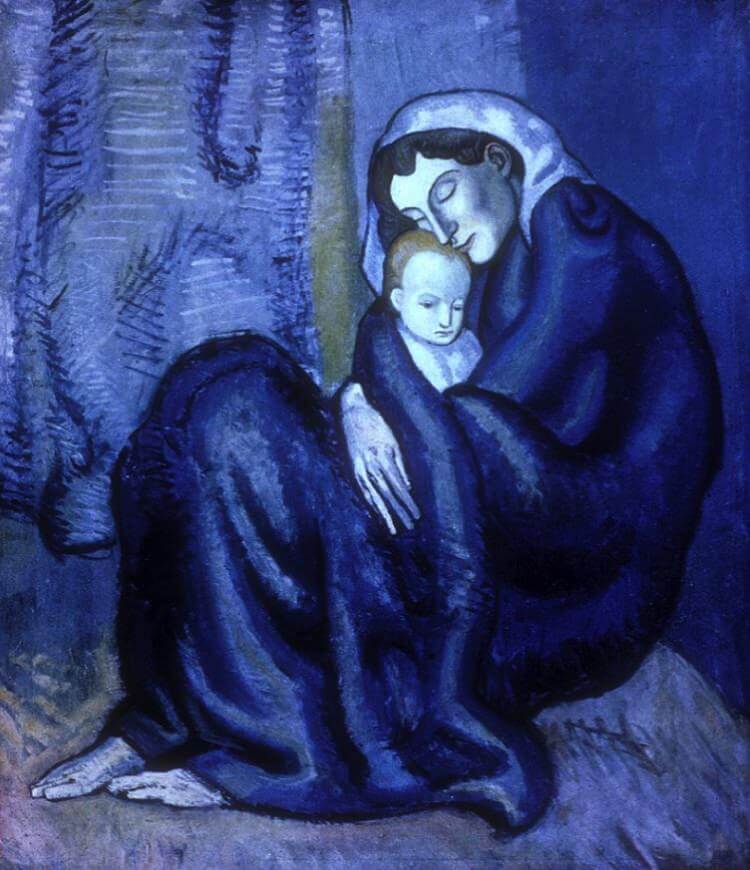Mother and Child, 1902 by Pablo Picasso
In the late summer of 1901 Picasso visited the women's prison of Saint-Lozore. His first-hand experience of this squalid environment informed the poverty-induced melancholy of many of his 'blue-period' works. The prison was, in
some respects, the product of the social circumstances of turn-of-the-century Paris. Desperate poverty had induced extensive prostitution, which in turn caused the spread of venereal diseases. This inevitably led to further
desperate poverty and many of the inmates at the Soint-lazare prison were ex-prostitutes suffering from such diseases.
The prison, well known in its day, had become the subject of both artists and writers, and even appeared in the lyrics. of popular songs sung in the cafes and cabarets of Montmartre. Picasso's Mother and Child depicts on
aspect of such incarceration that particularly disturbed the artist - the presence of children in the prison. The mother, identifiable as a Saint-lazare inmate by her white bonnet, is represented as an abject figure whose
attenuated form conveys a sense of overall despair. However, Picasso has allowed a sense of hope to permeate the work, through his obvious allusion to the Madonna and Child.





















